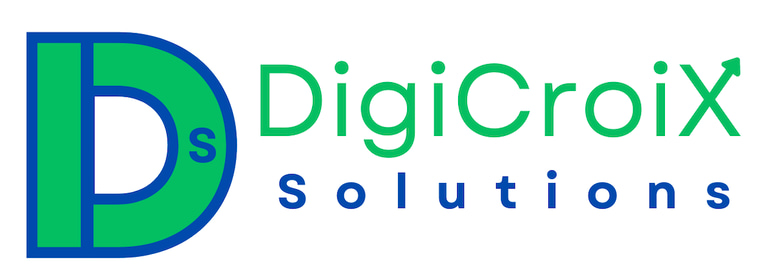The Future of Advertisement of Hospital: Digital vs. Traditional Marketing
Advertisement of hospital has evolved—are you keeping up? Find out why digital advertising is outperforming traditional methods and how to leverage it for patient acquisition.
ADSCOMPREHENSIVE GUIDEBUSINESS GROWTH STRATEGIES
Vishwa Raval
2/28/20255 min read


The Evolution of Hospital Advertising
The landscape of hospital advertising has witnessed significant transformation over the decades, reflecting broader societal shifts and advancements in technology. Initially, in the early 20th century, hospitals primarily relied on traditional marketing methods such as print media, radio, and television. The print advertisements in newspapers and magazines communicated hospital services and health tips, while radio spots reached a diverse audience, spreading awareness of healthcare options. During the latter half of the 20th century, television became a dominant medium, allowing hospitals to showcase facilities and advanced treatments to a broader demographic.
However, as we moved into the 21st century, the advent of digital technology began reshaping the ways in which hospitals market themselves. The rise of the internet brought forth a new era of advertising, where online presence became essential for hospitals aiming to connect with current and prospective patients. Social media platforms, search engine marketing, and email campaigns emerged as valuable tools that enabled healthcare facilities to engage with patients in real-time and provide personalized content. These digital strategies have increasingly supplanted traditional marketing methods, which, while still relevant, have been forced to adapt to a more interconnected world.
Several key milestones illustrate this evolution. The introduction of hospital websites marked a pivotal shift, providing patients with instant access to information about services and specialists. Subsequently, the proliferation of smartphones and mobile applications further facilitated communication between hospitals and patients, allowing for easy appointment scheduling and access to medical records. Additionally, the changing demographics of patients, including the rise of millennials and Generation Z, have created a demand for transparency and authenticity in advertising. These generations prefer online research and peer-reviewed testimonials over traditional advertisements, resulting in a fundamental re-evaluation of hospital marketing strategies.
Driven by these factors, the future of hospital advertising will likely continue to revolve around digital platforms, as healthcare institutions strive to meet the evolving expectations of a more informed patient demographic. Hospitals that embrace these changes stand to enhance their outreach and foster deeper connections with their communities.
Why Digital Advertising is Outperforming Traditional Methods
In recent years, digital advertising has emerged as a transformative force in the healthcare sector, surpassing traditional marketing methods in various ways. One of the most compelling advantages of digital advertising is its unparalleled reach. According to recent studies, digital platforms allow healthcare providers to connect with a broader audience compared to traditional methods such as print or television ads. This capability is particularly crucial in a time when patients increasingly turn to online resources for health-related information.
Engagement is another pillar where digital marketing excels. Research indicates that healthcare advertisements on social media platforms achieve significantly higher engagement rates than their traditional counterparts. For instance, hospitals that have integrated digital marketing strategies reported up to a 300% increase in patient inquiries stemming from online campaigns. By utilizing tools like social media, healthcare organizations can foster interactions and build relationships with their patients, promoting trust and loyalty.
A notable benefit of digital advertising lies in its ability to target specific demographics effectively. Platforms such as Google Ads and Facebook allow marketers to create tailored ads directed towards particular age groups, interests, or geographical locations. This granular targeting reduces wasted expenditure and maximizes the return on investment (ROI). Furthermore, digital campaigns can be monitored in real-time, enabling hospital marketers to track performance metrics effortlessly. This immediate insight allows for agile adaptations based on analytics, ensuring campaigns remain effective and relevant.
Several case studies highlight the impressive results hospitals have achieved by shifting to digital marketing. For instance, a leading metropolitan hospital reported a 50% increase in appointment bookings after implementing a focused digital campaign that aligned with current health trends. Such examples underline the effectiveness of digital advertising in achieving measurable results in the healthcare sector, making it increasingly difficult for traditional marketing methods to compete.
Leveraging Digital Advertising for Patient Acquisition
In today’s rapidly evolving healthcare landscape, hospitals must adapt to leverage digital advertising effectively for patient acquisition. A successful digital marketing strategy incorporates various elements such as search engine optimization (SEO), social media marketing, content marketing, and pay-per-click advertising. Each component plays a crucial role in enhancing a hospital's online presence and attracting potential patients.
Search engine optimization is foundational in helping hospitals ensure their websites rank high on search engine results pages (SERPs). By optimizing website content with relevant keywords related to healthcare services, hospitals can increase organic traffic, thereby reaching a broader audience. Utilizing local SEO practices, such as optimizing Google My Business listings and local backlinks, is particularly beneficial in connecting with nearby patients searching for healthcare solutions.
Social media marketing offers hospitals an engaging platform to communicate with their audience. Creating and promoting informative content regarding health awareness, services, and community engagement fosters a connection with potential patients. Platforms like Facebook and Instagram provide avenues for cost-effective targeted advertising to specific demographics, thereby enhancing patient acquisition efforts.
Content marketing is essential in establishing a hospital as a thought leader in the healthcare industry. Producing high-quality blogs, videos, and infographics on pertinent health topics can attract potential patients and keep them informed about services. Moreover, implementing pay-per-click (PPC) advertising can drive immediate traffic to the hospital's website. With PPC campaigns, hospitals can target specific keywords and demographics, ensuring their ads reach the right audience at the right time.
Best practices for digital advertising include creating compelling ads that resonate emotionally with potential patients. Incorporating clear calls-to-action, patient testimonials, and addressing common pain points can enhance ad effectiveness. Additionally, integrating digital advertising strategies with traditional methods such as print or radio can create a cohesive marketing approach, maximizing reach and impact.
Future Trends in Hospital Advertising
The landscape of hospital advertising is undergoing a significant transformation, driven by advancements in technology and changing consumer behavior. One of the most notable trends is the shift towards personalized marketing. Healthcare institutions are increasingly recognizing the importance of tailoring their messages to meet the specific needs and preferences of individual patients. This approach enhances patient engagement and ensures that marketing efforts resonate more effectively, ultimately leading to improved patient acquisition and retention.
Complementing personalized marketing is the growing utilization of artificial intelligence (AI) and machine learning. These technologies allow hospitals to analyze vast amounts of data and gain insights into patient behavior and preferences. By leveraging AI, healthcare providers can create targeted advertising strategies that are not only cost-effective but also maximize conversion rates. For instance, predictive analytics can help hospitals identify potential patients based on their online search behaviors, enabling timely and relevant engagement.
Another significant trend shaping hospital advertising is the rise of video marketing. As more consumers turn to video content for information, hospitals are increasingly deploying video strategies to convey their messages. From patient testimonial videos that provide social proof to educational content highlighting medical services, videos can establish a personal connection with potential patients and build trust in the institution's expertise.
Moreover, the importance of social proof and online reviews cannot be overstated. Patients are more likely to choose healthcare providers based on the experiences shared by others. Consequently, hospitals need to actively manage their online reputation, encouraging satisfied patients to leave positive reviews and addressing any negative feedback promptly. Furthermore, as technology continues to evolve, healthcare marketers must remain adaptable and open to new advertising platforms and methodologies to stay ahead of competitors in an increasingly digital landscape.
Get in Touch
Book your free consultation today and let's create a strategy to elevate your success!


Address
94 Shree Nagar Apartment, Sola Road, Naranpura, Ahmedabad, Gujarat, India 380063
6706 Fulton Avenue, Burnaby, BC, Canada V5E 3H1
Phone
+91 88497 12474
Quick Links
© 2025. All rights reserved.
